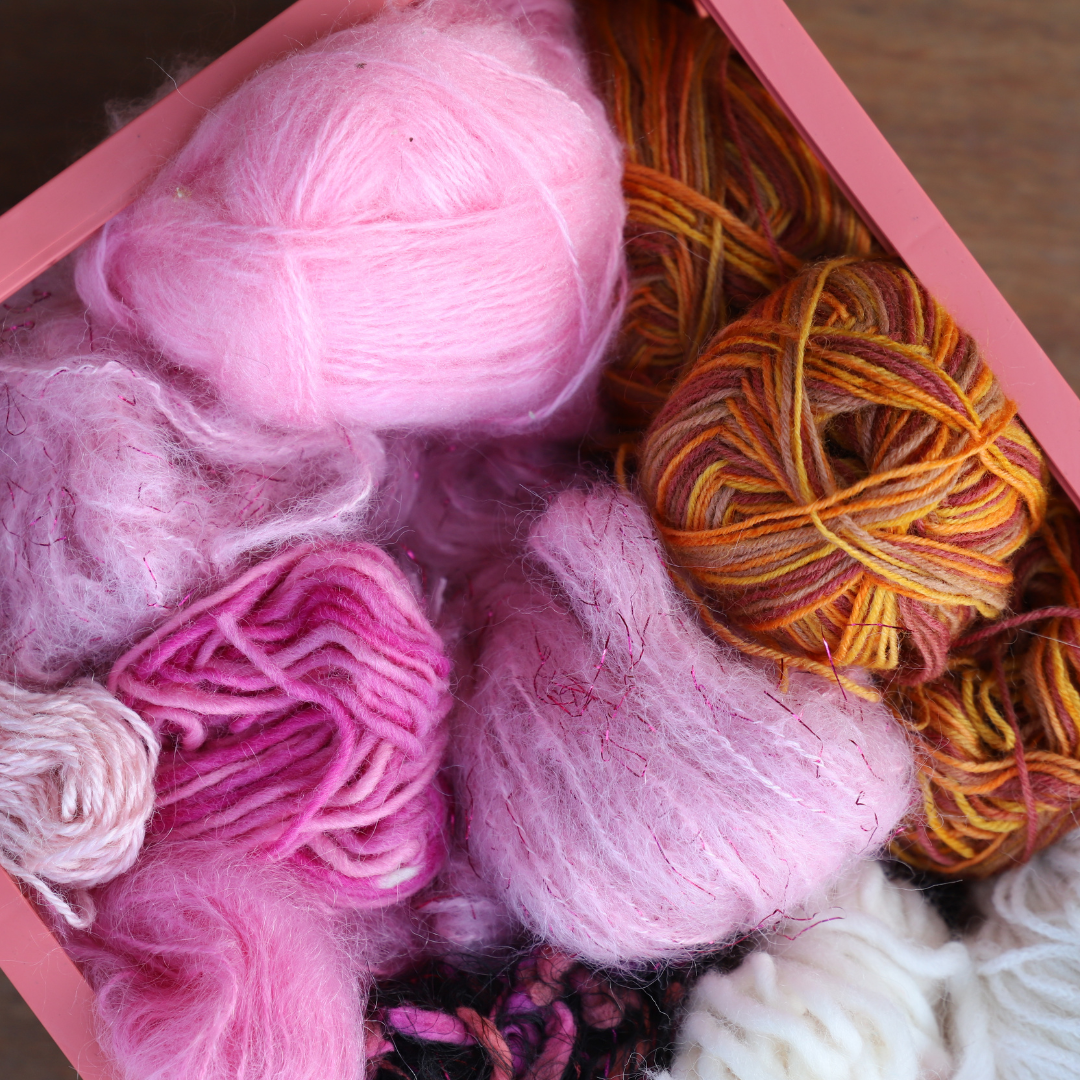

STEP BY STEP GUIDE TO KNITTING WITH REMAINS
We all have them, the yarn scraps. The ones that just lie there waiting to become something. Read along here and find out how you can bring them to life 👇
1: Select project
Start by choosing what you want to knit. This makes it easier to choose the yarn you want to knit with. You can combine all kinds of yarn, but think about which needle you will knit on.
I recommend that you start with a small, manageable project, for example a hat or neckerchief - then you can practice and get a feel for the techniques.
If you don't have leftover yarn lying around, I can really recommend buying yarn from Garnspecialisten , who sell deadstock and surplus yarn - that is, yarn that would otherwise have been thrown away.
You can, for example, buy one of their Stopgarnspildpacks where you get a lot of different yarns.
2: Sort the yarn by thickness
3: Make a knitting test
When you have sorted the yarn, you can make a knitting test. Here you have to guess a little to start with. Feel the different yarns and take out the threads that you think together will affect the knitting strength. Maybe you can make do with 1 thread at a time, maybe you need to lay 2-3 threads together to achieve the knitting strength.
Then cast on 12-20 stitches on the needle the recipe says you need and knit a few cm. Measure how many stitches you have per 10cm and see if you need more or fewer stitches.
If you have too many stitches compared to what the recipe states per 10 cm (e.g. 10 instead of 8), you must EITHER use thicker yarn OR switch to a thicker needle. In this way, each stitch will take up more space and you will hit the knitting tension.
And vice versa if you have too few stitches.
Adjust your yarn composition to achieve the knitting strength.
Maybe you need to replace a thin thread with a thick one or vice versa. You can also add one more thread. Personally, I like to knit with a maximum of 3 threads.
4: Start knitting
When you have found the knitting strength, look at the yarn you have left.
Now try putting the different types together so they look like the composition you have on the stick.
Over time, the feel for the yarn will sit in your fingers and it will be easier to knit with scraps and different yarns.
5: Make bundles - or change color when you feel like it
Now you can either make small bundles of yarn that are similar in thickness to the yarn from your knitting sample, or you can change the color continuously. The bundles are especially good if you find it difficult to let go of control and think too much about the result.
If you like to play with colors and have a little more control along the way, keep all the yarn by your side while you knit and change colors when you feel like it.
6: How to change yarn
When you need to change yarn, cut it and tie it together with the new yarn. Make sure you have approx. 3 cm behind the knot. You just need to tie one knot.
Vary the length of your strands. I don't use threads under 15cm as I think it would be too difficult.
The shorter the threads, the more color play.
TIP: If you knit with several threads, think about how you want the transitions in your color changes.
If you change all threads at once you get a hard transition, if you change one thread at a time you get softer transitions.
When you knit over the knots, try to pry them over on the back. It may take a few turns to get them there. You can also push the knots over on the back at the end, but I like to do it along the way.
Finally you can staple the ends on the back, I usually just leave them hanging though.
7: Washing?
Be extra careful if you wash your knit! We'll save this for another guide, but in short I recommend you steam it lightly or air it rather than washing it.
